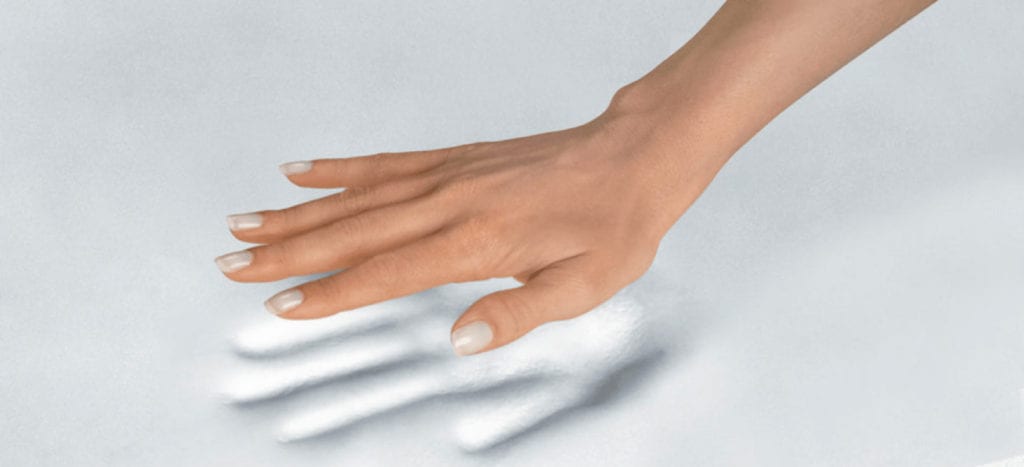How Is Memory Foam Made?
A Description of Memory Foam and How It's Made.Memory Foam Developed by NASA
The very first memory foam material was developed by NASA in the 1970s. Their intention was to try to improve seat cushioning and crash protection for airline pilots and passengers. Memory foam has widespread commercial applications, in addition to the popular mattresses and pillows you are familiar with today.
Anybody who has gone shopping for a bed, a new pillow, or even a new bicycle seat or mouse pad wrist rest in the last two decades will have encountered memory foam. This new material has been applied to a huge range of uses since its introduction to the US in 1991—from revolutionary medical uses to gimmicky new product designs. But what is it, who came up with it, and how does it work?
Though it is a relatively recent phenomenon in the US, memory foam has been around in various forms since the midpoint of the century—the first work on the polyurethane polymers that go into memory foam was actually begun in 1937 by Otto Bayer and his coworkers In 1965 the nursing staff at Lankenau Hospital tested “inert polyurethane porous foam” pads for use as bedding material, and found that they prevented “decubitus ulcers” (also known as pressure ulcers, sustained by patients who spend long amounts of time lying down), and found them to be hypoallergenic and resistant to bacteria (Kraus 1965). In the 1960s, NASA did work on materials that would serve as better cushions, and would also keep astronauts comfortable and protected from the extreme g-forces of lift off. It was then that memory foam as we know it came into being.
Memory Foam vs. Polyurethane Foam
Memory foam starts its life as polyurethane foam—a material first manufactured in the 1950s by adding water, halocarbons, or hydrocarbons to a polyurethane mix. Depending on the chemicals added and the way it is processed, polyurethane can form anything from car parts to spray liner, or in this case, one of the most comfortable sleeping surfaces the world has ever seen.
In the modern production of memory foam, a polyol is mixed with a diisocyanate and water. The foam rises like bread, with an open cell structure that helps give it its unique ability to spring back slowly from pressure. The introduction of gases into the initial solution creates a bubble matrix; vary the application of chemicals, and the size of the bubbles changes. A more open cell structure will have more give, and allow more airflow through the material.
Memory Foam Firmness
The firmness of memory foam is rated by the IFD (Indention Force Deflection), also known as ILD (Indentation Load Deflection) measuring the force in pounds required to make a 25% indentation in a 4 inch thick foam square. Also important in measuring the “softness” of a foam is the density. Foam densities range from 1-7 lbs, but a good-quality foam will usually be at least 4 and usually 5 lbs. A foam with a high density, but low ILD may still feel firm when compressed, especially in a lower room temperature. The density together with the IFD/ILD and the resilience will determine the softness, firmness, and life-span of the foam. Foam that is lower density will more readily conform to pressure, whereas higher density foam (usually 5-lb. or above) molds itself to contours when warmed by body heat.
Major production of memory foam did not begin until NASA released it into the public domain in the 1980s. Fagerdala World Foams took up the challenge of producing this somewhat difficult product, and in 1991 produced the “Tempur-Pedic Swedish Mattress.” Today numerous companies around the world produce visco-elastic memory foam, which gives consumers increased variety and price range. Unfortunately, it also increases the risk of purchasing cheaply-made foams that may deteriorate over time. Not all memory foam is made equal, as many of the overseas manufacturers work at reducing the cost of memory foam by adding in other “filler” type ingredients that reduce the quality and potentially add toxicity to the formulation. The real problem with overseas foam is the lack of quality standards that have been created in the United States.
Because of the wide range of types and densities, ILD, resiliencies and quality of memory foam, MemoryFoamMattress.org was created to offer information and expert advice that includes memory foam mattress reviews, memory foam ratings and, as in this article, describing how memory foam is made. Other helpful resources for standards and testing information are the Polyurethane Foam Association.
MemoryFoamMattress.org even lists information that will help you determine which companies are using American made memory foam. A glossary of terms often used in discussions of foam production, testing, and safety (such as “flex fatigue,” “high comfort,” and “high resilience”) can be found at the Polyurethane Foam Association’s glossary.


